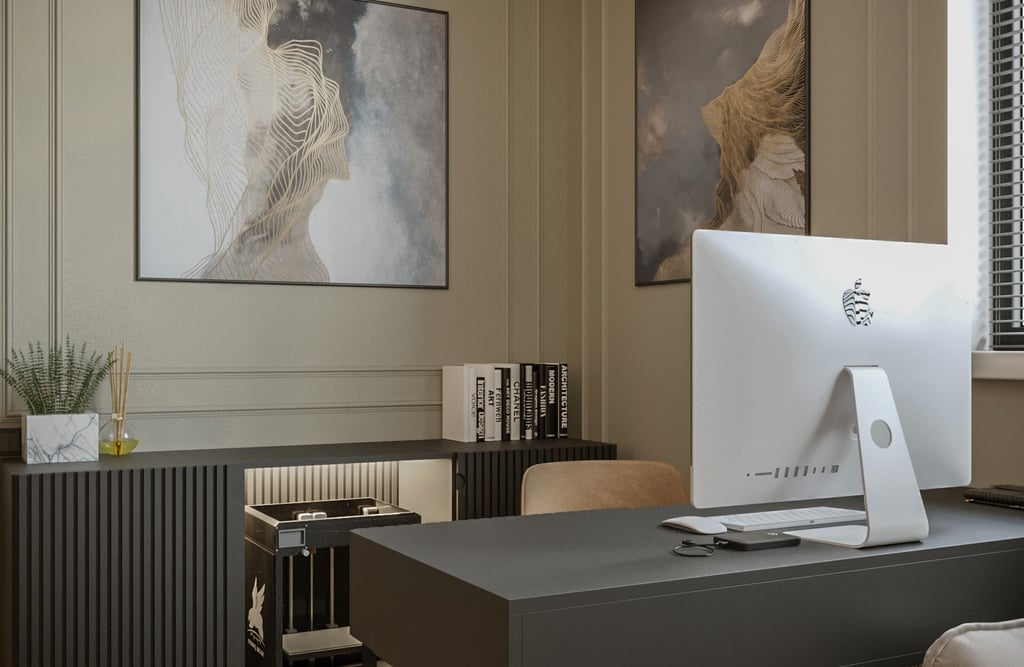Styles and Techniques in Architectural Visualization
Roman Marchyshak
9/7/20244 min read


Styles and Techniques in Architectural Visualization
Architectural 3D modeling has revolutionized the design process, saving time, reducing costs, and making drafting more efficient. Using advanced rendering software, architects can create highly detailed, realistic plans, shifting away from traditional methods. However, 3D visualization extends beyond just photorealistic rendering. It has many other exciting uses that showcase the versatility of this powerful technique, which we'll explore to broaden your understanding of its capabilities.
Today, we invite you to dive into the different styles and techniques of architectural rendering. This exploration will enhance your skills and show how integrating these techniques into your marketing strategy can create a more comprehensive approach to your architectural work. Using 3D renderings can significantly boost your marketing by offering potential clients realistic visualizations of future projects.
Various Architectural Rendering Techniques
Architectural rendering involves the artistic representation of a design or blueprint before it is built. This can take many forms, from a quick hand-drawn sketch on a napkin to an elaborate 3D animation created by a creative agency. Below are examples of common rendering techniques:
Handmade Illustrations
Handmade illustrations hold a special place in architecture, offering a personal touch that modern digital tools often lack. These drawings act as a bridge between a project and its audience, making the design intent clearer. Although traditional, handmade illustrations can be enhanced by software that replicates the human touch, offering a blend of modern technology and craftsmanship. Examples include 3D exterior and interior renderings that bring spaces to life before they are built. Handmade illustrations add a personal flair to projects, elevating how designs are presented and communicated.
Sketchy, Hand-Drawn Style Renderings
Sketchy, hand-drawn renderings combine artistic creativity with technical detail, becoming a favorite among architects. This style allows freedom in design while maintaining precision, making it an excellent tool for client engagement. The organic, expressive quality of hand-drawn visuals offers a unique way to present architectural projects, making it a striking option for architects aiming to stand out.
Black and White Renderings
Black and white renderings offer a clean, focused way to highlight architectural designs, emphasizing form, lines, and details without the distraction of color. This minimalist approach allows architects to communicate the core elements of a design effectively, making it ideal for projects that require a contemporary or sophisticated feel.
Cutaway Renderings
Cutaway renderings allow architects to showcase the inner workings of a building by removing sections to reveal internal elements. This technique is invaluable for demonstrating hidden architectural details, like floor plans, plumbing, and ventilation systems. Cutaways help architects and interior designers communicate complex ideas clearly, offering a detailed view of how different design aspects come together.
Collage Style Renderings
Collage renderings use a mix of images, sketches, and other visual elements to create a comprehensive and artistic representation of a project. This technique helps architects present a variety of perspectives, often merging different elements into one cohesive visual. Collage renderings are excellent for storytelling, creating a sense of atmosphere, and highlighting details that might be missed in more traditional renderings.
Computer-Generated Wireframe Renderings
Wireframe renderings offer a cutting-edge way to visualize architectural designs. Using advanced software, architects can create detailed 3D perspectives that simplify complex layouts. This technique is especially useful for large-scale projects, helping to bridge the gap between concept and reality by giving clients and teams a clear, precise view of the design.
Minimalist Renderings
Minimalist renderings are gaining popularity for their clean, sharp aesthetic. This style focuses on simplicity, emphasizing lines, shapes, and the interaction of light without unnecessary details. Minimalism allows architects to present their designs clearly and effectively, making it ideal for projects with smaller spaces or designs that require a focus on essential elements.
Mapping Technology
Mapping technology adds a new dimension to architectural visualization, enabling architects to create detailed, photorealistic renderings that closely mirror real-life conditions. This technology can replicate natural light, textures, and even environmental elements like trees and water, offering a highly realistic depiction of a design under different lighting and seasonal conditions.
Hyper-Realistic Renderings
Hyper-realistic renderings blend art and technology to produce visuals that are almost indistinguishable from photographs. This advanced technique allows architects and designers to showcase their ideas with extraordinary detail, making it a powerful tool for both design and marketing. High-quality renderings can evoke strong emotional responses from potential clients, creating a memorable impression before a project even breaks ground.
Combining Rendering Techniques
As architectural visualization continues to evolve, the ability to combine different techniques becomes a powerful tool for architects. Methods like collage, wireframe, and mapping can be used together to create compelling visuals that bring a project to life. Knowing how to choose the right style for each project is key to effectively communicating design intent and achieving successful presentations.
Conclusion
Success in architectural visualization depends on using the right tools and techniques for each project, balancing creative artistry with technical precision. Whether you're an architect looking to enhance your portfolio or a company aiming to boost marketing efforts, this article has shown how various 3D rendering styles can elevate your architectural designs. Selecting a skilled 3D rendering company is critical in achieving these results.
